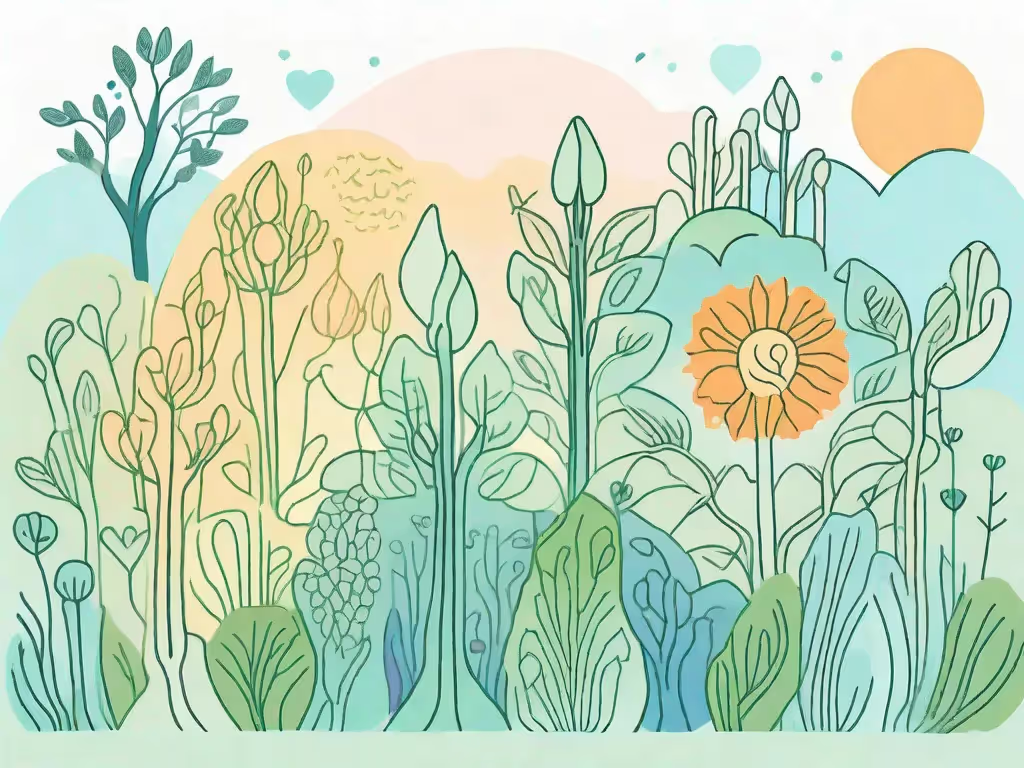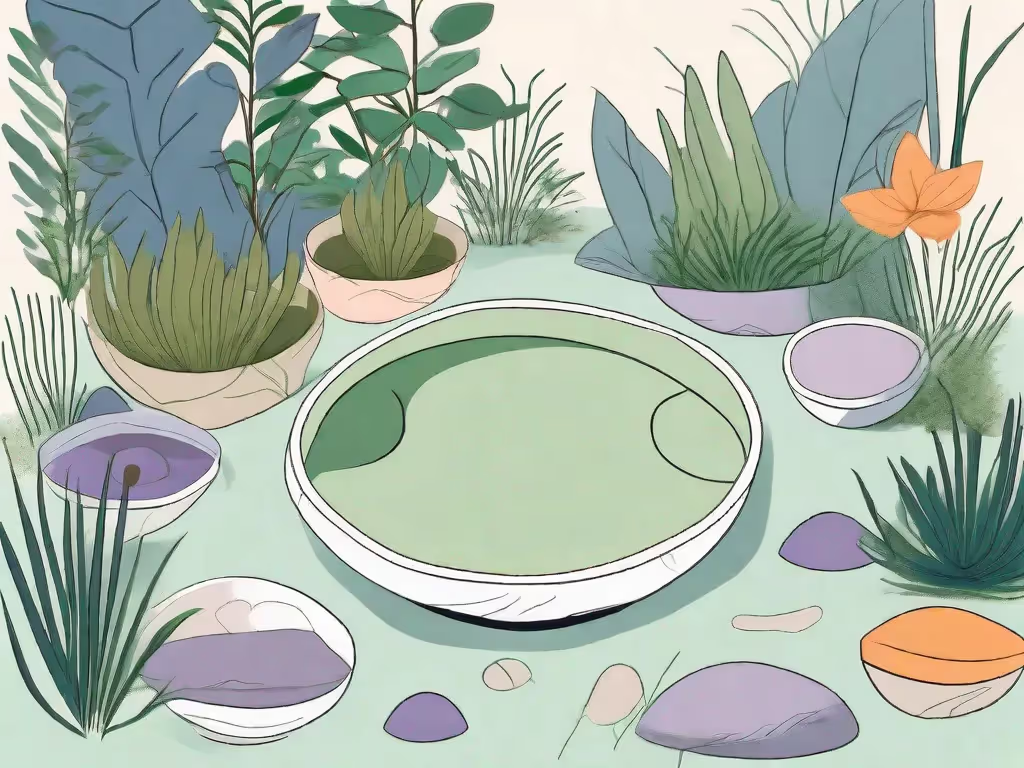Welcome, dear reader, to the fascinating world of Cernunnos, the ancient deity worshipped by civilizations across Europe. In this article, we will take a deep dive into the origins, symbolism, worship, and modern-day connections of this majestic god. So, pull up a chair, pour yourself a cuppa, and let's get started!
The Origins of Cernunnos
Before diving into everything Cernunnos, let's explore his origins. This horned god has deep roots in Celtic mythology, where he was worshipped as the god of fertility, animals, and the underworld.
The Celtic Connection
As with most ancient deities, various theories abound about the origins of Cernunnos. Some scholars believe that he has roots in the ancient Indo-European religions, while others argue that he is a uniquely Celtic god. Regardless, most agree that he was worshipped by the Gauls, who lived in modern-day France and Belgium, as well as by the Britons, who occupied the British Isles.
The Celts were a people who lived in Europe during the Iron Age and Medieval Period. They were known for their complex religious beliefs, which included a pantheon of gods and goddesses. Cernunnos was one of the most important of these deities, and he was worshipped in various forms throughout the Celtic world.
One of the most fascinating aspects of Cernunnos' worship is that it was not limited to a specific region or tribe. Instead, his cult was widespread throughout the Celtic world, and his image can be found in artifacts from as far afield as Spain and Romania.
Depictions in Ancient Artifacts
One of the most intriguing things about Cernunnos is the way in which he is depicted in ancient artifacts. The most common portrayal of the god shows him with a pair of antlers on his head, symbols of his connection to the animal kingdom. Some depictions also show him with a serpent, possibly symbolizing rebirth and regeneration. Others show him wearing a torc, a symbol of wealth and power.
These depictions offer a glimpse into the mindset of the Celts and their reverence for the natural world. Cernunnos was seen as a powerful figure who could control and manipulate the forces of nature, and his image was used in rituals and ceremonies to invoke his power.
The Horned God in Mythology
Cernunnos is widely believed to be the origin of the "horned god" archetype that appears in numerous mythologies around the world. In many cultures, including ancient Greece and Rome, the horned god was associated with fertility, the wild, and the underworld. The most famous horned god outside of Celtic mythology is probably Pan, the Greek god of nature, who was depicted similarly to Cernunnos with goat horns and a wild, animalistic demeanor.
It is fascinating to see how similar deities and archetypes appear in different cultures throughout history. The horned god is a perfect example of this phenomenon, and it is clear that Cernunnos played a significant role in shaping this archetype.
The Symbolism of Cernunnos
Now that we have explored the origins of Cernunnos, let's dive into the symbolism behind this powerful god.
The Horns and Antlers
As mentioned earlier, Cernunnos is most often depicted wearing a pair of antlers on his head. These antlers are typically seen as a symbol of his connection to the animal kingdom and his power over the natural world. They also symbolize his association with the hunt and with fertility.
The antlers are not just a decoration for Cernunnos. They represent his ability to communicate with animals and to be one with nature. It is believed that he could transform into any animal he desired, and that he used this power to protect the natural world from harm. The antlers also represent his role as a guide, leading humans through the forest and helping them to connect with the spirits of nature.
Serpents and Torcs
In addition to his antlers, Cernunnos is often depicted with a serpent, coiled around his arm or leg. The serpent is a symbol of rebirth and regeneration, and it is believed that Cernunnos was associated with both life and death.
The serpent is also a symbol of knowledge and wisdom. It is believed that Cernunnos possessed great knowledge of the natural world, and that he used this knowledge to help humans understand the mysteries of life and death. The torc, which he is sometimes depicted wearing, is a symbol of his power and wealth. It represents his ability to provide for his followers and to protect them from harm.
The Lord of Animals and Fertility
Cernunnos was worshipped as the lord of animals, the wild, and the forest. He was believed to have the power to make crops grow, animals multiply, and humans conceive.
His connection to fertility was so strong that he became associated with sex and virility in later Celtic mythology. He was seen as a god of pleasure, and his followers believed that he could help them to experience the joys of love and intimacy. He was also seen as a protector of women, and it was believed that he could help them to conceive and give birth to healthy children.
In conclusion, Cernunnos was a complex and powerful deity, with deep connections to the natural world and to the mysteries of life and death. His symbols, including his antlers, serpent, and torc, represent his many powers and abilities, and his role as a guide and protector of humans and animals alike.
The Worship of Cernunnos
So, how did the ancient Celts worship Cernunnos? Let's explore their rituals and beliefs.
The ancient Celts were a deeply spiritual people who worshipped a pantheon of gods and goddesses. Among these deities was Cernunnos, the god of fertility, the wild, and the natural world. The worship of Cernunnos was an important part of Celtic religious life, and it involved various rituals and ceremonies that were designed to honor and appease the god.
Rituals and Ceremonies
The worship of Cernunnos involved various rituals and ceremonies that were focused on fertility, the wild, and the natural world. These rituals were often held outdoors, in natural settings such as forests or fields. One common ritual involved sacrificing animals or other offerings to the god. This was done in the belief that it would help ensure bountiful crops, healthy livestock, and successful hunts.
Other rituals involved dancing or chanting in Cernunnos's name. These dances were often accompanied by music, such as the playing of pipes or drums. The chanting was done in a rhythmic, repetitive manner, and it was believed to help connect the worshippers with the god.
Another important aspect of Cernunnos worship was the use of sacred plants. The Celts believed that certain plants had spiritual properties that could help connect them with the gods. Plants such as mistletoe, holly, and oak were considered sacred, and they were often used in Cernunnos rituals.
Sacred Sites and Temples
While there is little evidence of a physical temple dedicated to Cernunnos, there were likely sacred sites throughout the Celtic world that were associated with the god. These may have included natural features such as standing stones or wooded groves, as well as man-made structures such as stone circles. These sites were believed to be places where the veil between the physical and spiritual worlds was thin, and where it was easier to connect with the gods.
One such site is the Callanish Stones in Scotland. These standing stones are arranged in a circle, and they are believed to have been used for religious purposes by the Celts. It is possible that they were used in Cernunnos worship, as they are located in an area that was once heavily forested.
The Role of Druids
As with many ancient religions, the worship of Cernunnos was closely tied to the druidic tradition. Druids were the priests and religious leaders of the Celtic people, and they likely played a key role in the worship of Cernunnos. They may have been responsible for conducting rituals and interpreting the will of the gods.
The druids were highly respected members of Celtic society, and they were believed to have supernatural powers. They were responsible for maintaining the oral tradition of the Celts, and for passing down the knowledge of their religion and culture from generation to generation.
In addition to their religious duties, the druids were also involved in politics and diplomacy. They were often called upon to mediate disputes between tribes, and they played a key role in maintaining peace and stability in Celtic society.
In conclusion, the worship of Cernunnos was an important part of Celtic religious life. It involved various rituals and ceremonies that were designed to honor and appease the god, and it was closely tied to the druidic tradition. While there is little physical evidence of Cernunnos worship today, the legacy of this ancient religion lives on in the myths and legends of the Celtic people.
Cernunnos in Modern Paganism
So, what about Cernunnos today? Is he still worshipped in some form or fashion?
Wicca and Neo-Druidism
Cernunnos has found a second life in modern pagan traditions such as Wicca and Neo-Druidism. These religions, which focus on nature, animism, and the worship of multiple deities, have resurrected the cult of Cernunnos in various forms. Some see him as a symbol of the masculine divine, while others view him as a deity in his own right.
The Green Man and Other Connections
Additionally, Cernunnos has been linked to other figures in contemporary paganism, such as the Green Man, a symbol of nature and rebirth, and the Horned God of witchcraft, who is associated with virility and the hunt.
Celebrating Cernunnos Today
Whether you choose to worship Cernunnos in a traditional Celtic context or in a modern pagan tradition, there are many ways to celebrate this ancient god today. You might light a candle in his honor, meditate on his symbolism and power, or simply spend time in nature, connecting with the wild and the earth that he represents. And who knows? You might just find a little bit of Cernunnos within yourself, too.
The End
And there you have it, folks! A crash course in everything Cernunnos. We hope you enjoyed this wild and wooly ride through the world of ancient Celtic gods and modern pagan traditions. Until next time, may the antlers of Cernunnos guide you on your path.
Aura is Your All In One App for Meditation, Mindfulness Wellbeing
Find peace every day with one app for your whole well-being. There is no one-size-fits-all solution to mental well-being. Aura is the first all-in-one wellness app that learns how to best help you. Discover an endless library of expert-created tracks for your well-being, all taught by the world’s best coaches, therapists, and storytellers. With Aura's personalized recommendations, you can find peace every morning, day and night.



.webp)






.avif)

%20(1).avif)


.avif)
.avif)
.webp)


.avif)


















































































































.avif)

















.svg)









